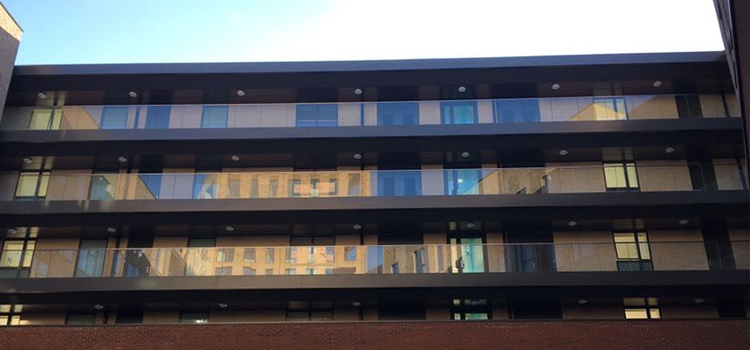
The changing face of building design
Facade design
Within the world of architecture, facade design is certainly changing. There’s been push towards glass facades and rainscreen cladding technologies with more designers adopting the phrase “more windows, less wall.” It seems that the days of building with only traditional brick and render or stone facades are numbered. Instead, many architects are combining quirky brick design with aluminium or stone statement cladding to create something truly unique.
Materials and architectural preferences are evolving, trends are changing and with ambitions rising, technical ability has never been more important.
For a few reasons, the facade of a building is invaluable to any new project. First, from an aesthetic point of view it shapes how the whole building will look. But more than that, the facade actually plays a highly functional role, making a building more energy efficient, protecting it from the elements and providing safety and security in the form of fire-resistance.
As architecture and construction has evolved, facades have separated from load-bearing structures allowing for more experimentation. Architects can now use facades for creative and artistic expression, creating interfaces that are adaptable and responsive. Media architecture has also developed in major cities, boasting dynamic lighting that can transform the physical appearance of a building. Miniaturisation, improved energy efficiency and increasingly affordable lighting technology have expanded the architectural design palette and in fact, cities are increasingly proposing policy for media architecture in urban planning schemes.
We see changes and developments in facade design which strive to make buildings look stylish and sleek, while also being lower on cost than the latest technological systems. Statement Cladding, specifically aluminium and stone, are both durable and low maintenance too.
Building design
And it’s not just facades that are evolving. We’re seeing changes and developments in building design not only to keep cost down, but with a focus on community too. The Ministry of Housing, Communities & Local Government, outlines why good design matters:
‘Design impacts on how people interact with places. Although design is only part of the planning process it can affect a range of economic, social and environmental objectives beyond the requirement for good design in its own right.’
High rise apartments became the height of fashion in 1950s post war Britain; using the Bauhaus principle of ‘form follows function’, these ingenious housing estates were dedicated to providing better living conditions for the residents of crowded cities and took inspiration from Le Corbusier’s five points of architecture. Modern, urban living was on the rise and the idea of a neighbourhood and community living were high on the agenda, with galleried walkways and places where people could meet.
This architectural style was short lived and over the course of the next few decades building design evolved, seeing enclosed internal walkways and corridors becoming the trend. However, we’ve recently seen a revival in residential apartment buildings with long external balconies and walkways, reminiscent of the fashionable apartments built in the 1950s.
For architects and contractors, these balconies and walkways often present a challenge in our technologically focused modern world. For example, the detailing of the soffits can be tricky where a variety of needs have to be met.
Firstly, the soffit zone is often very busy. It presents a logical service route and any soffit treatment must be able to achieve its required support structure without clashing with the pipes and cable trays often found there; this also gives rise to the need for demountability for occasional maintenance and inspection.
Secondly, both for the resident and for the general building aesthetics, the soffits, which are within easy reach of a floor, must be both robust and good looking; poor detailing, damage in use, vandalism and maintenance difficulties all threaten the ongoing smart appearance of the building.
Lockmetal provide practical solutions to these architectural challenges. Producing bespoke designs and fabrication details, we understand the complexities and focus on these detailed intersections. We adapt to the challenges and suggesting alternative methods along the way to ensure a solution that is fit for purpose and achieves the vision and budget set out by the architects and clients.

